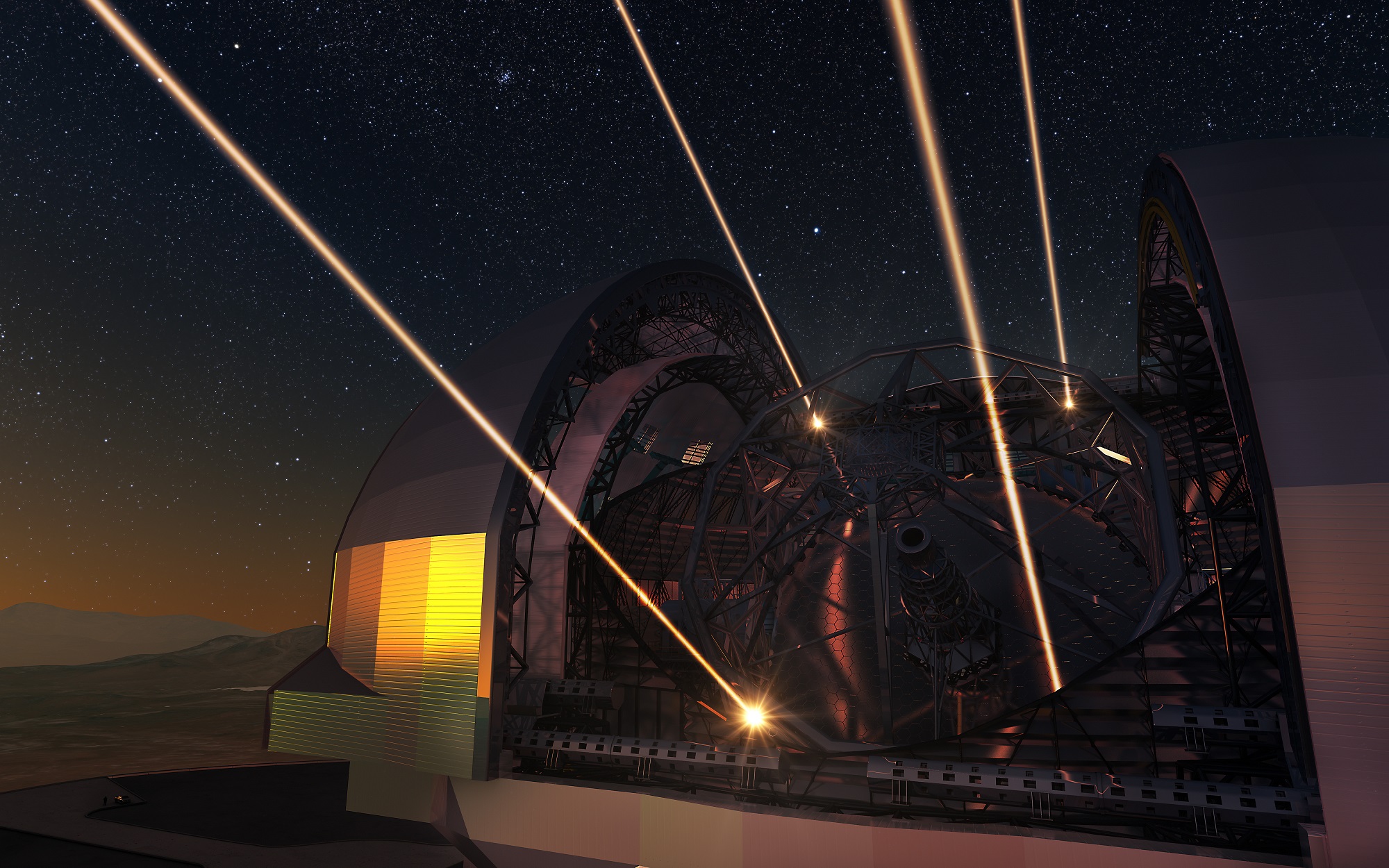In this series we are exploring the weird and wonderful world of astronomy jargon! Adjust your eyeglasses to read about today’s topic: adaptive optics!
Let’s say you’re an astronomer. You’ve built yourself a gigantic new observatory to study the heavens above. You look through the eyepiece (or more accurately, the computer screen), expecting the glory of space to reveal itself to you. Instead, to your frustration, you find only a blurry, wiggly mess.
Earth’s atmosphere is pretty good when it comes to keeping living things alive, but pretty terrible when it comes to astronomy. No matter how big your telescope is, how sophisticated, and how powerful, as long as it’s on the ground it has to contend with all those miles of thick atmosphere.
The problem is the ever-shifting turbulent motions of hot and cold air as they struggle to evenly distribute heat throughout the globe. Warm and cold air have different indices of refraction, meaning that they bend the path of light differently. So light from a distant star doesn’t follow a straight line on its way through our atmosphere – it constantly shifts, zigging and zagging as the air moves.
It’s exactly the same process that makes stars twinkle. It’s pretty, but annoying.
Sure, you can mitigate some of this by building your observatory in a desert (to keep the air as still as possible) and/or on top of a mountain (to minimize the amount of air between you and space), but you can’t get rid of it.
You could just launch your observatory into space, but rocket farings are only so big, and launches are so dang expensive, that it’s much more cost-effective to leave your giant observatory on the ground.
The solution? Bust out the lasers and do some adaptive optics.
Shoot a bright laser up into the sky. Watch as it dances due to the same atmospheric distortions that are messing up your observations. Stick the mirror of your telescope on an adjustable table. When the laser shifts, shift your mirror with it, cancelling out the effects of the turbulent atmosphere.
It’s a simple idea, but very difficult to put into practice. One of the origins of the development of the technology came from classified research by the U.S. military to better track enemy satellites. It wasn’t until the 1990’s that the technology matured enough to make it a mainstay of modern astronomy.

